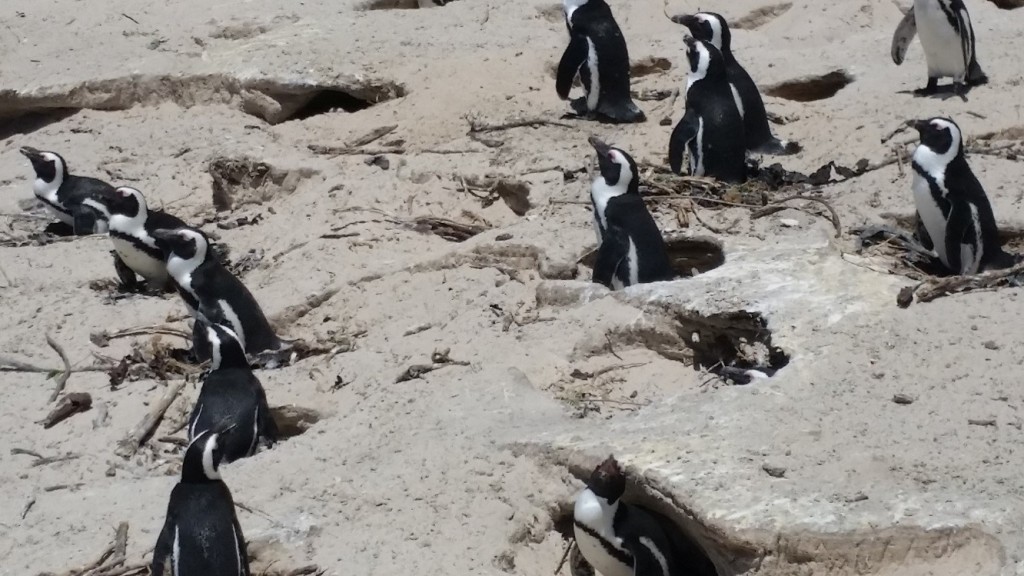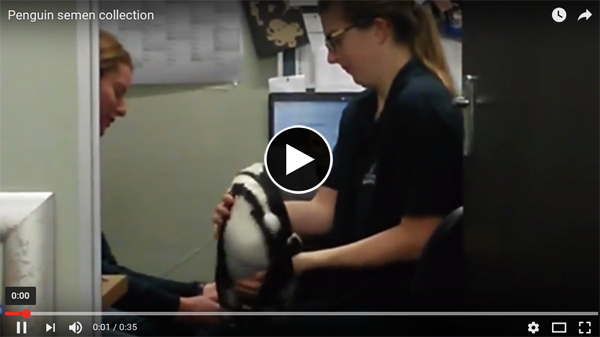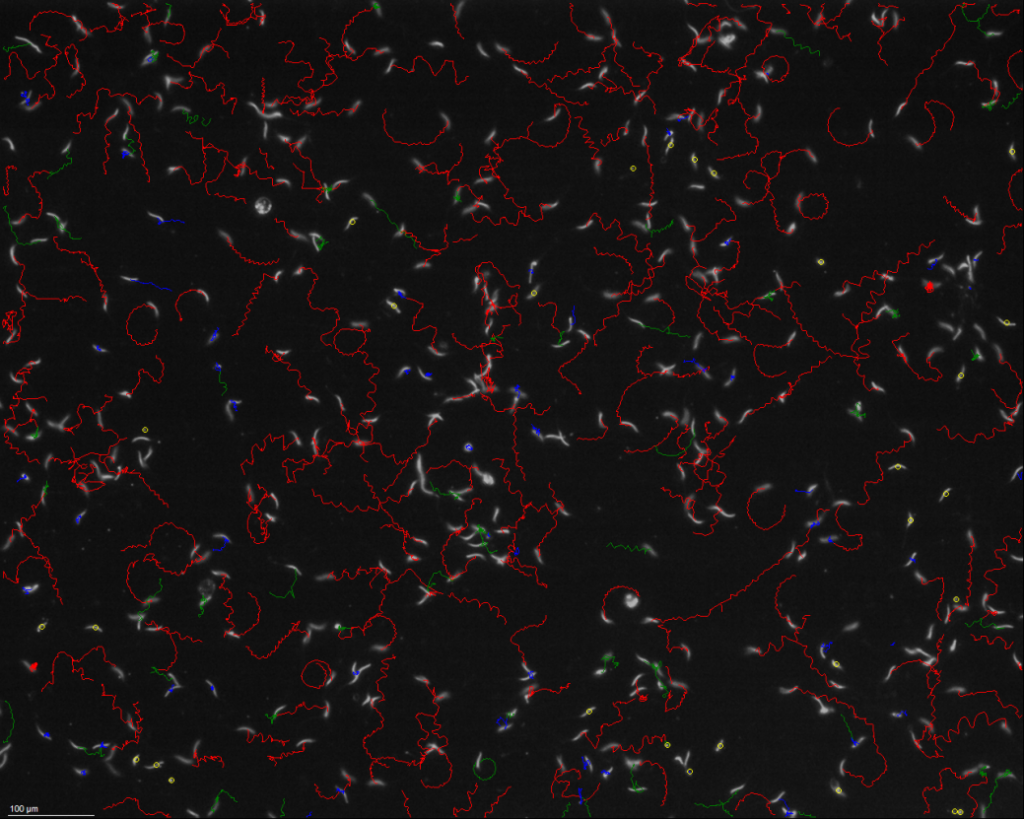Sperm of the endangered African penguin and Rockhopper penguin studied
The African penguin (Spheniscus demersus) (Fig. 1) is endemic to southern Africa and is classified as endangered on the IUCN Red List. It is also known as the black-footed or jackass penguin because its bray sounds like that of the donkey. There remains less than 5% of the population of 50 to 70 years ago. In 1910 the population was estimated at about 1.5 million and currently at less than 55000. A rapid decline was also observed in endangered Rockhopper penguins (Eudyptes chrysocome moseleyi), with a 90% decrease. Which factors were responsible for this dramatic decline in number of African penguins?

Fig.1: Breeding African penguins at Boulders Beach in Simonstown, Cape Town.
- Exploitation: In the 1950’s and later penguin eggs were sold commercially which was one of the first factors responsible for a decline in numbers
- Severe oil spills particularly in the Cape Town area in 2000 when 40000 penguins were affected. About 19000 of these birds had to be cleaned and cared for.
- Fisheries exploitation: The main food source of the African penguin is sardines, anchovies and cuttlefish. Fisheries from South Africa and internationally over exploited these resources and accordingly it became more difficult for penguins to find sufficient food close to the shores and feeding further offshore made them more vulnerable to sharks and seals, their major enemies.
- The kelp gull is a major threat stealing their eggs but also small mammals like mongooses.
There is accordingly a need to understand the reproductive biology including the spermatology of these two penguin species to assist in hopefully natural and assisted propagation. They are only sexually mature at the age of four, will select a mate and breed. Surprisingly, captive African penguins in Aquaria and elsewhere breed very successfully. The big concern and problem then resides with the decline in numbers of wild populations because of the factors listed above.
A major research programme was developed among the National Research Foundation in South Africa, the National Zoological Gardens and several universities involving research and strategies to save the African penguin from extinction. Some estimates indicated that it could be extinct in 20 years.
One of the programmes involved in depth studies of semen and sperm quality by investigators at the University of the Western Cape (UWC). But how do you obtain sperm from an aggressive African penguin? When you get close to them they pinch you with their beaks and become much stressed. If you are patient and lucky you can habituate one or two penguins in a captive breeding colony to produce semen. In this process they become attached to one of the keepers, follow them, slap their wings and upon back massage produce sperm in a large petri dish held underneath (Fig. 2 – video at Two Oceans Oceanarium in Cape Town).

Fig.2: Sperm sampling of habituated penguins. Flapping of wings and neck bending similar to normal copulatory response.
Very small volumes of semen (20µl) can be collected. The semen can be analysed within three hours without loss of quality. In the Comparative Sperm Biology programme at UWC a SCA CASA system version 6.2 is used to analyse sperm concentration and sperm motility in different media at different time points. In general, it has been found that sperm quality is excellent judged by sperm concentrations >3000 million/mL, sperm motility >72 % and several sperm kinematic measurements (Fig. 3). These results accordingly do not only support the success rate of captive breeding but provide a large database for sperm parameters and what can be considered fertile.

Fig.3: Typical sperm tracks of African penguin as studied by PhD student Siya Mafunda at UWC. Red: Rapid swimming sperm; Green: Medium swimming sperm; Blue: slow non progressive sperm.
In this research programme at UWC, PhD student Siya Mafunda, also managed to successfully cryopreserve the sperm of the African penguin. They seem to be quite resistant to cryopreservation procedures.
The good news is that all the concerted efforts by several research groups and Institutions and Universities in South Africa do not only contribute to new knowledge but hopefully also to assist in re-establishing new colonies along the coast line for the propagation of penguins in the wild…there where they belong.
Gerhard van der Horst (PhD, PhD)
Senior Consultant
MICROPTIC S.L.



Leave A Comment